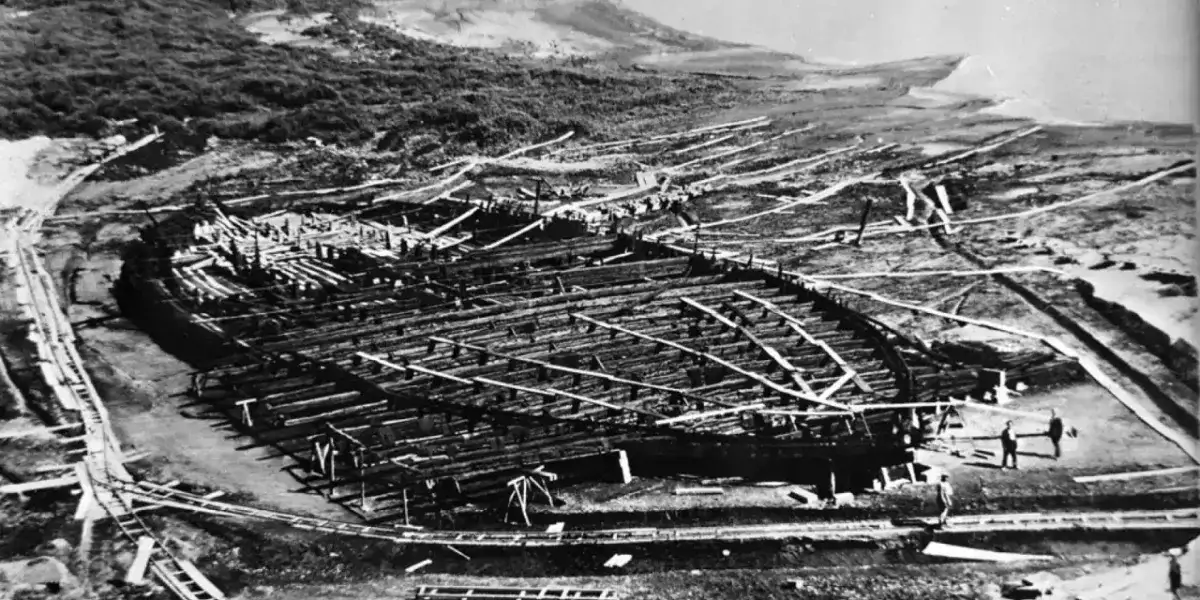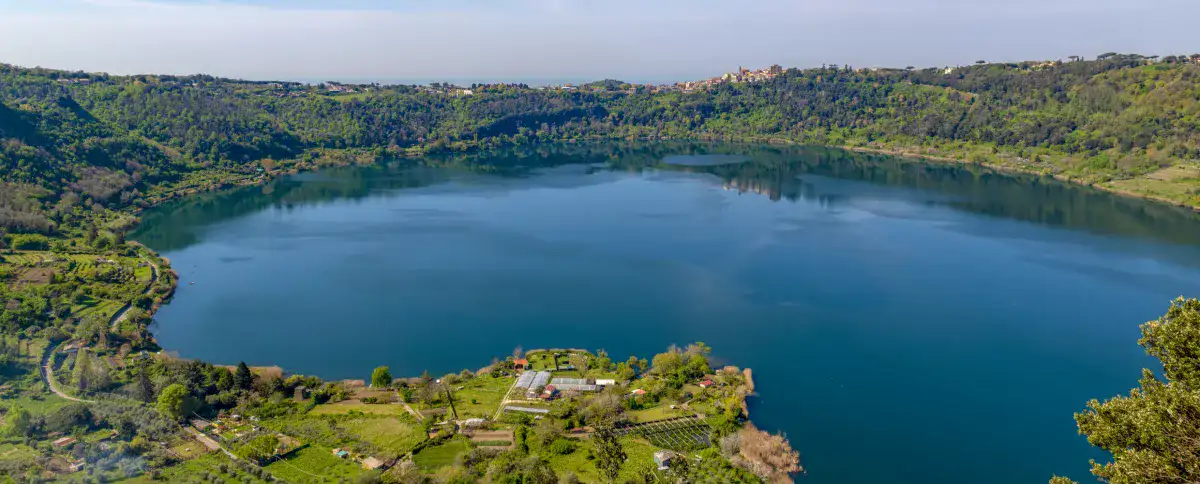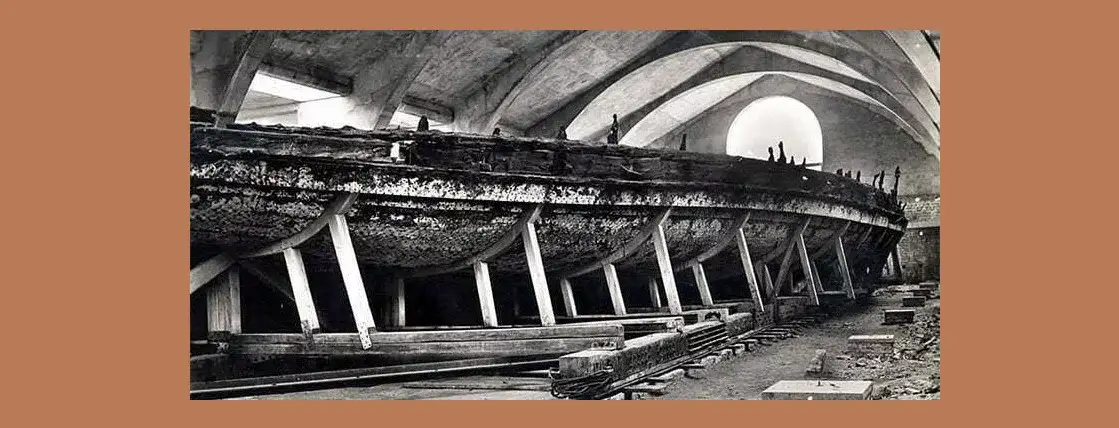
The luxury superyachts of the Roman Emperor Caligula
The luxury superyachts of the Roman Emperor Caligula

In 1928, Mussolini pumped until the water came down... what appeared at the bottom surprised the whole world. The first parts of the ship began to emerge from the waters after more than 1800 years... a few years after the withdrawal of German aviation, the Nazis bombed the two ships of Caligula that were destroyed by a devastating fire...
To the south of Rome, in the heart of Lazio, is a small and enigmatic lake, the Nemi Lake, which has only 167 hectares. There are many myths and legends on it, enriched by the cult that was professed to Diana, so it became known as the "Mirror of Diana." and for his "sanctuary" was on his southern shore. Perhaps this spiritual relevance, was what led Caligula to bathe him with blood under the apology of the religious. The Roman historian Suetonio reports that Caligula ordered the construction of two huge recreational barges in its imperial villa of Lake Nemi, around the year 37 of the Christian era. A large barge (over 70 meters in length) in a line that we could now call "luxury superyachts." According to history the Roman emperor wanted to emulate the bars of Hellenistic recreation with the intention of overcoming the ancient Ptolemaic kings and dazzling the world. The idea of the unique regator of the known world, wanted the first of these ships, to be a floating cult of Diana... being really destined the second to yacht of luxury and pleasure without limits, both for the emperor and for her guests.

Lake Nemi is a small lake located in the Lazio, not far from the Albano, south of Rome. In the 20's, the remains of two large recreational ships belonging to Caligula, called the Nemi ships, were found in perfect conditions.
Caligula dies in the year 41, as the story of her pretorian guard and her two superyachts says, they are possibly abandoned by the hatred that much of the Roman citizens of the influential area of the capital of the Empire professed. The chronicle of his recovery begins in the 15th century, when Cardinal Colonna begins with his theory of trying to recover the specials... one of his greatest enthusiasts of the project is León Battista Alberti. The admiration caused by that discovery encouraged successive attempts to make the Roman ship emerge, which was believed to be the work of Tiberio or Trajano. In 1535 Francesco de Marchi, at the service of Alessandro de Médicis, was immersed in the lake for more than an hour thanks to a strange artiluge invented by Guglielmo di Lorena. According to De Marchi in Della military architecture, he managed to extract "so much wood to carry two mules."in addition to "numerous metal nails, so bright and integers that they seemed made that same week". In addition to the keel of the ship, of cypress wood, pine and alert and covered with lead plates and fish-embed wool, he saw in its interior brick and enamel floors and remains of some rooms that he could not access... but have to spend several centuries in order for Annesio Fusconi to use a diving bell in 1827 to begin the actual work to achieve the goal... despite the high technology used then only get him to extract some materials, case of pieces of columns, sculptures and votives... with the sadness of seriously damaging the particular...
Already in 1895 Elisha Borghi, located one of the superyachts of Caligula, managed to extract several copper objects, and soon found, advised by the fishermen, the other specio at 19 meters deep... It had been shown that the ships of Caligula were not just a legend... A few years later, Italian engineer Malfatti studied the two ships with an expert marine diver and wrote a report, where he made clear all aspects of the finding and the feasibility of its recovery. His plan was to partially drain the lake through a large tunnel, from the lagoon to the outside.
It was concluded that the only way to rescue the ships was to partially dry the lake, but it had to wait several decades. In 1927, Guido Ucelli, director of a Milanese company of hydraulic pumps and turbines, lent the necessary instruments. Through large centrifuges, the waters of the lake were aspirated and taken to the Nemi emissary, an underground conduit of 1,650 meters used in Roman times to regulate the level of the waters and keep Diana's nearby sanctuary safe. In 1928 the excavation began. During the spring of the following year, thousands of curious came to admire the magnificence and technical advances of the first ship rescued. The vast operation concluded with the exhibition of the two ships at the gigantic Museum of the Ships, built at the same time in Nemi, but could only be admired a few years. On the night of May 31, 1944, a devastating fire, fed by the wood of the ships, left them turned into ashes. Some blamed German detachments in retreat for the disaster; others blamed thieves looking for the lead of the ships. Of the gigantic ships of Caligula only the most precious bronzes were saved, which had recently been safe in Rome, where they are still exposed today.

The ships were 70 meters long by 20 meters long... with a high quality in their construction and finishes: gold bread, mosaic floors, marbles, and an amazing technology, such as that used in their construction that reflect the great technical capacity of the Roman shipbuilding and naval architects in those distant times of the past (Caligula Museum)
At the bottom of Nemi Lake the third ship of Caligula could remain hidden. The Nemi municipal government, headed by its mayor Alberto Bertucci, has initiated, following the approval of the Municipal Board, the process of raising funds in support of the major project. Some studies have shown that there is a real possibility that the bottom of the lake hostel still the old boat. The finding of this true "historical jewel" would be a milestone that would be the relaunch not only of the Nemi Ships Museum but also of the entire lake valley, which certainly represents an open-sky archaeological museum. The small Spanish town - Nemi belongs to the region known as the Castelli Romani- is open to collaboration with organizations, associations, societies, historians, archaeologists and civil protection in order to achieve the objective.
© 2024 Nautica Digital Europe - www.nauticadigital.eu











